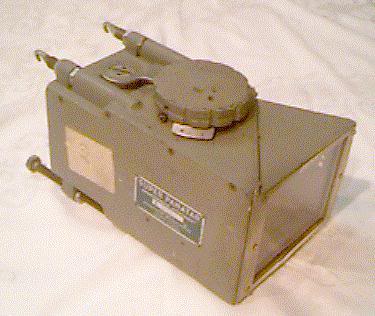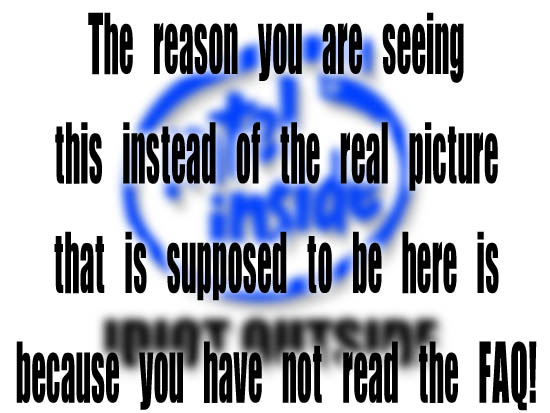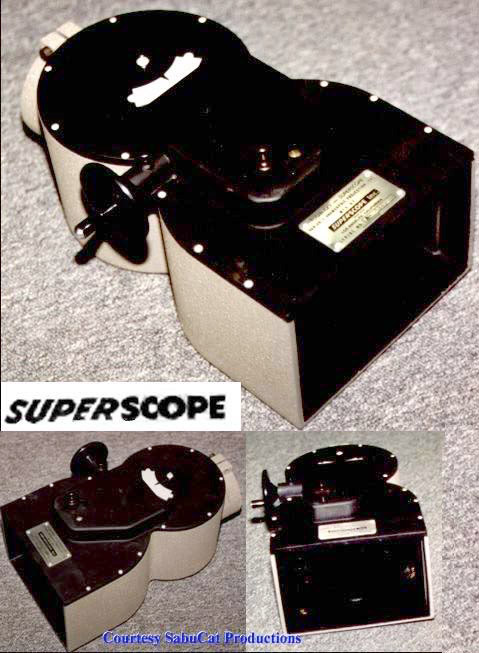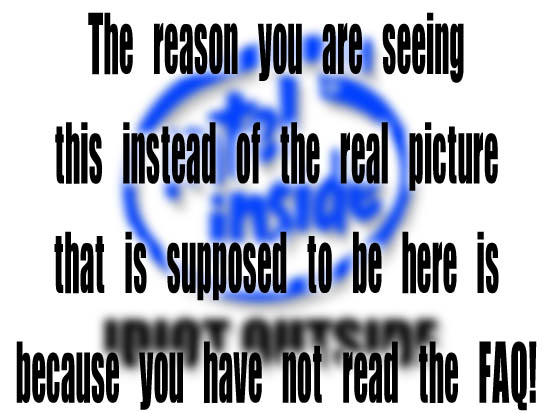|
|
This topic comprises 3 pages: 1 2 3
|
|
Author
|
Topic: cinamascope advance notice???
|
|
|
|
|
|
|
|
|
|
|
|
|
|
|
|
|
|
|
Michael Coate
Phenomenal Film Handler

Posts: 1904
From: Los Angeles, California
Registered: Feb 2001
|
 posted 11-14-2013 04:45 PM
posted 11-14-2013 04:45 PM




I guess the time is right for me to share an article I put together recently for The Digital Bits for the 60th anniversary of the launch of CinemaScope. While this does not specifically answer the original question, I believe it is related enough to give one a sense of the initial roll-out and implementation of CinemaScope.
The second half of the article is a Q&A with some historians that, again, doesn't specifically address the original question, but is related enough that I think anyone with an interest in the subject might enjoy reading.
Looking Back At CinemaScope
quote: Michael Coate
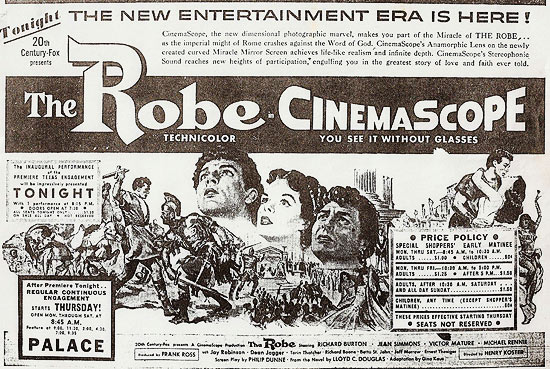
LOOKING BACK AT CINEMASCOPE
By Michael Coate
The Modern Miracle You See Without Glasses!
The Digital Bits is pleased to present this retrospective commemorating the 60th anniversary of the release of The Robe, the first motion picture produced in CinemaScope. In addition to a detailed history of the films original theatrical release, the article features a roundtable interview with three authorities on widescreen history.
THE ORIGINAL ENGAGEMENTS OF THE ROBE
Presented here is a chronological listing of the original first-run theatrical engagements of The Robe for the major and selected secondary markets in the United States and Canada. The number of weeks the film played has been provided for some of the entries.
1953-09-16
New York, NY Roxy [13 weeks]
1953-09-23
Chicago, IL State-Lake [16 weeks]
1953-09-24
Los Angeles, CA Chinese [13 weeks]
1953-09-24
Philadelphia, PA Fox [13 weeks]
1953-09-29
Kansas City, MO Orpheum [13 weeks]
1953-09-29
Pittsburgh, PA Harris [12 weeks]
1953-09-29
San Francisco, CA Fox [9 weeks]
1953-09-30
Dallas, TX Palace [5 weeks]
1953-09-30
Seattle, WA 5th Avenue [9 weeks]
1953-10-01
Atlanta, GA Fox [4 weeks]
1953-10-01
Detroit, MI Fox [13 weeks]
1953-10-01
Washington, DC Capitol [8 weeks]
1953-10-02
Buffalo, NY Buffalo [8 weeks]
1953-10-02
Salt Lake City, UT Lyric [4 weeks]
1953-10-02
Salt Lake City, UT Villa [8 weeks]
1953-10-06
Boston, MA Memorial [12 weeks]
1953-10-07
Indianapolis, IN Indiana [8 weeks]
1953-10-07
Memphis, TN Malco [5 weeks]
1953-10-07
New Orleans, LA Saenger [4 weeks]
1953-10-07
San Antonio, TX Majestic [4 weeks]
1953-10-08
Cleveland, OH Hippodrome [11 weeks]
1953-10-08
Houston, TX Metropolitan [5 weeks]
1953-10-08
Minneapolis, MN Radio City [7 weeks]
1953-10-08
Oklahoma City, OK Criterion [5 weeks]
1953-10-08
Portland, OR Orpheum [8 weeks]
1953-10-13
Syracuse, NY Paramount [5 weeks]
1953-10-14
Fort Worth, TX Worth
1953-10-15
Birmingham, AL Alabama
1953-10-15
Cincinnati, OH Albee [8 weeks]
1953-10-15
Denver, CO Denver [6 weeks]
1953-10-15
Nashville, TN Paramount [3 weeks]
1953-10-16
Jacksonville, FL Florida [3 weeks]
1953-10-20
Baltimore, MD New [11 weeks]
1953-10-21
Rochester, NY Palace [6 weeks]
1953-10-21
San Diego, CA California [6 weeks]
1953-10-22
Beaumont, TX Liberty [3 weeks]
1953-10-22
Spokane, WA Fox [5 weeks]
1953-10-22
Toronto, ON Imperial [8 weeks]
1953-10-23
St. Louis, MO St. Louis [10 weeks]
1953-10-27
Richmond, VA Byrd [7 weeks]
1953-10-28
Albany, NY Palace [3 weeks]
1953-10-28
Ogden, UT Egyptian [3 weeks]
1953-10-28
Omaha, NE Orpheum [4 weeks]
1953-10-28
Phoenix, AZ Fox [5 weeks]
1953-10-28
Sacramento, CA Senator [5 weeks]
1953-10-28
Wichita, KS Miller [4 weeks]
1953-10-29
Charlotte, NC Carolina [4 weeks]
1953-10-29
Dayton, OH Keiths
1953-10-29
Des Moines, IA Des Moines
1953-10-29
Knoxville, TN Tennessee [2 weeks]
1953-10-29
Milwaukee, WI Wisconsin [8 weeks]
1953-10-29
Montreal, QC Palace [7 weeks]
1953-10-29
Vancouver, BC Capitol [5 weeks]
1953-10-29
Winnipeg, MB Capitol [4 weeks]
1953-10-30
Oakland, CA Paramount [5 weeks]
1953-10-30
Tucson, AZ Fox [3 weeks]
1953-11-03
Norfolk, VA Norva
1953-11-03
Providence, RI Majestic [7 weeks]
1953-11-04
Akron, OH Colonial
1953-11-04
Fresno, CA Crest
1953-11-04
Springfield, IL Lincoln
1953-11-04
Tulsa, OK Orpheum
1953-11-04
Scranton, PA Comerford
1953-11-04
Wilkes-Barre, PA Paramount
1953-11-05
Augusta, GA Miller [3 weeks]
1953-11-05
Billings, MT Fox [3 weeks]
1953-11-05
Charleston, WV Kearse [3 weeks]
1953-11-05
Eugene, OR McDonald [3 weeks]
1953-11-05
Louisville, KY Rialto
1953-11-05
Montgomery, AL Paramount
1953-11-05
Pocatello, ID Chief
1953-11-06
Bakersfield, CA Fox [3 weeks]
1953-11-06
Harrisburg, PA State
1953-11-06
San Jose, CA California
1953-11-06
Springfield, MO Gillioz
1953-11-10
Erie, PA Sheas
1953-11-10
Missoula, MT Fox [2 weeks]
1953-11-10
Portland, ME Strand [4 weeks]
1953-11-10
Reno, NV Crest [3 weeks]
1953-11-10
Youngstown, OH Paramount [4 weeks]
1953-11-11
Canton, OH Palace [3 weeks]
1953-11-11
Columbus, OH Broad [5 weeks]
1953-11-11
Evansville, IN Majestic [4 weeks]
1953-11-11
Fort Wayne, IN Paramount
1953-11-11
Long Beach, CA West Coast [6 weeks]
1953-11-11
New Haven, CT Poli [4 weeks]
1953-11-11
Reading, PA Embassy [3 weeks]
1953-11-11
Roanoke, VA Grandin
1953-11-11
St. Paul, MN World
1953-11-11
Springfield, MA Poli [3 weeks]
1953-11-11
Toledo, OH Paramount [5 weeks]
1953-11-12
Columbus, GA Georgia
1953-11-12
Ottawa, ON Capitol [3 weeks]
1953-11-12
Savannah, GA Weis
1953-11-12
Worcester, MA Poli [4 weeks]
1953-11-13
Grand Rapids, MI Keiths
1953-11-13
Stockton, CA California [3 weeks]
1953-11-13
Joplin, MO Fox
1953-11-16
Greenville, SC Plaza [4 weeks]
1953-11-17
Miami, FL Miami [3 weeks]
1953-11-17
Miami (Coral Gables), FL Miracle [3 weeks]
1953-11-17
Miami (Miami Beach), FL Carib [3 weeks]
1953-11-18
Allentown, PA Boyd
1953-11-18
Calgary, AB Capitol [3 weeks]
1953-11-18
Davenport, IA Capitol
1953-11-18
Durham, NC Center [2 weeks]
1953-11-18
Lexington, KY Ben Ali
1953-11-18
Lincoln, NE Stuart [4 weeks]
1953-11-18
Peoria, IL Rialto
1953-11-19
Cedar Rapids, IA Iowa [3 weeks]
1953-11-19
Columbia, SC Palmetto
1953-11-19
Duluth, MN Norshor
1953-11-19
Hartford, CT Poli [3 weeks]
1953-11-19
Raleigh, NC Ambassador [2 weeks]
1953-11-20
Edmonton, AB Paramount [4 weeks]
1953-11-20
Rockford, IL Coronado [3 weeks]
1953-11-22
Quebec City, QC Capitol [3 weeks]
1953-11-23
Colorado Springs, CO Ute
1953-11-24
Tampa, FL Palace [3 weeks]
1953-11-25
Atlantic City, NJ Warner
1953-11-25
Boise, ID Rialto
1953-11-25
Flint, MI Capitol
1953-11-18
Fort Smith, AR Malco
1953-11-25
Kalamazoo, MI State
1953-11-25
Lansing, MI Michigan
1953-11-25
Racine, WI Venetian [2 weeks]
1953-11-26
Ann Arbor, MI State
1953-11-27
London, ON Capitol [3 weeks]
1953-11-28
Columbia, MO Missouri
1953-12-02
Albuquerque, NM Sunshine [3 weeks]
1953-12-02
Eau Claire, WI Hollywood [2 weeks]
1953-12-02
Frederick, MD Opera House [2 weeks]
1953-12-02
Hutchinson, KS Fox [2 weeks]
1953-12-02
Jackson, MS Paramount
1953-12-02
Manchester, NH State
1953-12-02
Monterey, CA State [3 weeks]
1953-12-02
Provo, UT Academy [2 weeks]
1953-12-02
Saginaw, MI Temple
1953-12-02
Tacoma, WA Music Box [4 weeks]
1953-12-02
Winston-Salem, NC Winston [2 weeks]
1953-12-03
St. Petersburg, FL Florida [3 weeks]
1953-12-03
Salina, KS Watson [2 weeks]
1953-12-03
Sioux Falls, SD State
1953-12-05
Cheyenne, WY Lincoln
1953-12-06
Biloxi, MS Saenger [2 weeks]
1953-12-09
Lawrence, KS Granada [1 week]
1953-12-10
Greensboro, NC Carolina [2 weeks]
1953-12-23
Madison, WI Orpheum [3 weeks]
1953-12-24
Corpus Christi, TX Centre [3 weeks]
1953-12-24
Little Rock, AR Capitol
1953-12-25
Baton Rouge, LA Paramount [2 weeks]
1953-12-25
Cape Girardeau, MO Broadway [2 weeks]
1953-12-25
Halifax, NS Capitol
1953-12-25
Hamilton, ON Tivoli [4 weeks]
1953-12-25
Lawton, OK Vaska [3 weeks]
1953-12-25
St. Joseph, MO Missouri [3 weeks]
1953-12-25
Santa Fe, NM Lensic [2 weeks]
1953-12-25
Springfield, OH Regent
1954-01-07
Orlando, FL Beacham [2 weeks]
1954-01-12
Las Vegas, NV El Portal [2 weeks]
1954-01-13
Odessa, TX Ector [2 weeks]
1953-01-13
Shreveport, LA Don
1954-01-14
Bismarck, ND Dakota [1 week]
1954-01-14
Lubbock, TX Lindsey [3 weeks]
1954-01-15
Burlington, VT Flynn
1954-01-15
Charleston, SC Gloria [3 weeks]
1954-01-15
Galveston, TX State [2 weeks]
1954-01-15
Regina, SK Capitol [3 weeks]
1954-01-20
Saskatoon, SK Capitol [2 weeks]
1954-01-23
El Paso, TX Plaza [2 weeks]
1954-01-26
Modesto, CA State
1954-01-27
Hattiesburg, MS Saenger [1 week]
1954-01-27
Tallahassee, FL Florida
1954-01-28
Abilene, TX Paramount [2 weeks]
1954-01-28
Amarillo, TX Paramount [2 weeks]
1954-01-28
Wichita Falls, TX Wichita [2 weeks]
1954-02-13
Austin, TX Paramount [2 weeks]
1954-02-26
Brownsville, TX Majestic [1 week]
1954-03-03
Fayetteville, NC Colony [2 weeks]
1954-03-12
Honolulu, HI Kuhio [5 weeks]
1954-04-15
Las Cruces, NM Rio Grande [1 week]
1954-04-18
Fairbanks, AK Empress [1 week]
The above is by no means a complete list of domestic theatrical bookings of The Robe. Instead, it provides a snapshot of the crucial first few months of the debut of CinemaScope. Ultimately, there were thousands of engagements by the time the film played all of the neighborhood, second-run, and small-town theaters. Most significantly, every one of the theaters cited purchased a new screen and projection lens, and (most) installed a new sound system.
The first CinemaScope presentations of The Robe held outside the United States and Canada were in the United Kingdom beginning November 1953. The first foreign-language presentations took place in France beginning December 1953. By September 1954, after one year, theaters in nearly every country in the world had converted to CinemaScope.
THE INTERVIEW
This portion of the article features an interview with three authorities on all things widescreen. The participants are film historians John Belton, Sheldon Hall and Martin Hart. (The interviews were conducted separately and edited into a roundtable format.)
John Belton is a professor of English and Film at Rutgers University and is the author Widescreen Cinema (1992) and co-editor (with Sheldon Hall and Steve Neale) of Widescreen Worldwide (2010).
Sheldon Hall is a senior lecturer in film studies at Sheffield Hallam University, UK. He is the author of Zulu: With Some Guts Behind It The Making of the Epic Movie (2006), co-author (with Steve Neale) of Epics, Spectacles, and Blockbusters: A Hollywood History (2010), and co-editor (with John Belton and Steve Neale) of Widescreen Worldwide (2010).
Martin Hart is the curator of the American Widescreen Museum (www.widescreenmuseum.com).
Michael Coate (The Digital Bits): What is the significance of the 60th anniversary of the introduction of CinemaScope?
John Belton: From the vantage point of 2013, CinemaScope seems like a relatively minor moment in the history of the cinema. The process was phenomenally successful for three or four years in the mid-1950s, only to be replaced or supplanted by other processes (Todd-AO, Panavision). It was, however, the agent of change, initiating the widescreen era, which continues to this day. Given today's smaller display platforms (cellphones, notebooks), CinemaScope has nostalgic value as a reminder of a period when big screen entertainment was at its height.
Sheldon Hall: That it's been sixty years since the introduction of CinemaScope. In itself, the anniversary is unimportant.
Martin Hart: CinemaScope was the international film industry's first notable alteration to the shape of the screen and improvement in sound. Clearly CinemaScope was itself inspired by Cinerama, but the three strip mosaic screen system took ten years to finally produce a story film, while Fox was demonstrating CinemaScope to exhibitors and press within six months of the premiere of Cinerama.
Coate: Was The Robe a good choice to launch CinemaScope?
Belton: With the advantage of hindsight, we can see that The Robe worked. It was a film that most exhibitors wanted to show and that desire forced those exhibitors to convert their theaters fully or partially to CinemaScope. Compare it to The Phantom Menace, which was Lucas' weapon to get exhibitors to convert to digital projection. Only a handful of theaters converted. Cameron had a very effective lure with Avatar in 3-D. It jump-started the stalled digital revolution, encouraging thousands of theaters to go digital.
Hall: Yes, in the sense that the subject and the settings allowed the scenic possibilities of the format to be amply demonstrated. A more visually imaginative director than Henry Koster would have helped, but clearly the film's commercial success was the best advertisement CinemaScope could have received.
Hart: The Robe was unquestionably the proper vehicle to introduce the CinemaScope system. CinemaScope was wonderful in epic films and The Robe had been a very popular book for many years. While it might be said that How to Marry a Millionaire is more entertaining, it's doubtful that the comedy would have inspired the audiences and competing studios to join the wide screen revolution, either by adopting CinemaScope for their biggest attractions or to develop their own system.
Coate: What is a good definition of widescreen?
Belton: Widescreen is an aspect ratio of 1.66:1 or greater.
Hall: Wider than the pre-1953 standard of 1.37/1.33:1. Of course, all motion-picture processes other than images recorded by mobile phones are wider than they are high, including Academy.
Hart: The long accepted definition of "wide screen" is any screen ratio greater than the long established 1.33:1 or 1.37:1. I have trouble defining 1.85:1 as wide screen since it is accomplished only by cutting off the top and bottom of the full Academy Aperture. And Paramount's 1953 ballyhoo about 1.66:1 being wide screen is rather laughable. There was no doubt that Cinerama and CinemaScope were decidedly wide.
Coate: Would CinemaScope have had the impact it did upon its introduction had stereo sound not been included?
Belton: Without stereo sound, CinemaScope would not have been able to compete with Cinerama. But, given that the majority of exhibitors chose to show CinemaScope with mono sound, one could argue that stereo had little impact. For the most part, it was reserved for a handful of first-run theaters.
Hall: No, because stereo allowed the sound-stage to be as wide as the visual aspect. The association of stereo sound with Cinerama also made it necessary to develop a comparable sound process for CinemaScope so as not to attract adverse criticism. The simplicity of four-track mag sound-on-film was one of Fox's triumphs.
Hart: I find it difficult to attribute a lot of credit to the new four-track magnetic sound as being a major contributor to the wide acceptance of CinemaScope. While stereophonic sound seemed to be very important initially, exhibitors and other studios resisted it. And it may be said that, for the most part, audiences didn't actually notice it. Exhibitors complained loudly about the high cost of installing a completely new sound system and within two years Fox was the only studio to offer stereo sound on all its CinemaScope product. It might be claimed that the dropping of the magnetic mandate was what really let CinemaScope spread far and wide.
Coate: Were the four channels of audio (left, center, right, surround) used on CinemaScope just right, too many or not enough?
Belton: Hindsight suggests that six channels of sound provided filmmakers and audiences with a more effective soundscape. At the least, the surrounds need to be split.
Hall: Just right at the time, but it's difficult to see what more could have been done with the technology available and with the economic constraints of theater installations.
Hart: Considering the size of the average theatre in the early 1950s, a four-track stereo system was more than adequate. A large percentage of stereo films did not use the surround channel at all; just the opposite of what was the norm after the introduction of Dolby Matrix Stereo in the late 1970s.
Coate: Did the introduction and success of CinemaScope and other processes affect the industry in a positive or negative way?
Belton: Aside from the permanent shift to a widescreen format, the effect was minimal. Widescreen lured audiences back to the movie theater for a brief period but did not stem the long-term decline in movie attendance.
Hall: At the time there were both positive and negative consequences, financially and aesthetically, as with the introduction of any new technology. Long-term, the effects were positive.
Hart: CinemaScope and competing systems, along with greatly increased use of color, definitely had a positive effect on the film industry. Anyone living in the 1950s will recall that CinemaScope, VistaVision, and other processes were much in the minds of audiences and virtually all existing media joined in the interest in the new processes.
Coate: Would CinemaScope (and other widescreen/wide gauge formats) have had the same impact had it been introduced in a different era?
Belton: Efforts were made to introduce widescreen formats in earlier eras (the 1890s, 1929) and failed. Demand for participatory entertainment in the 1950s gave CinemaScope an economic footing it would not have had in earlier or later eras.
Hall: Any answer to this could only be speculative, but the precedent of the abortive introduction of widescreen formats in 1929-31 suggests that the time was right in 1953.
Hart: Attempts by the major studios to widen the screen date back into the late 1920s but all methods ultimately failed. Disney produced Fantasia with a dramatic quasi-stereophonic sound system in 1940 and that film didn't break even until the 1970s. The wide screen era happened at precisely the right time in the U.S. Its adoption in Europe and other parts of the world was not quite as dramatic because television had not eaten away over half of the film going audience.
Coate: In what way was CinemaScope superior and/or inferior to the Academy format?
Belton: Each format has its own value. However, one must admire the design of the CinemaScope frame which took standard 35mm film and "re-thought" it to provide more image area as well as four-track sound.
Hall: Any format is ultimately only as good as the talents of the filmmakers using it, so the opportunities 'Scope offered for different types of composition depended on directors and DPs recognizing them and rising to the challenge which many did. Technically, 'Scope was inferior (for a while at least) because of the increased grain structure, poorer definition and optical distortions caused by the early lenses.
Hart: CinemaScope mandated the installation of much larger screens than had been common up to that point. Even though CinemaScope initially seemed to tax the available light from arc lamps it came to offer a brighter image than the 1.85:1 format which blew the image up to a greater degree. The demands of CinemaScope, and virtually all 35mm "wide" systems forced Technicolor to further refine their dye transfer imbibition print to remove misregistered colors which were much more visible, and annoying, on the new larger screens. Basically CinemaScope and its competitors forced improvements in virtually all aspects of film production and exhibition. If the Academy Aperture had remained the standard there would have been technical stagnation in the industry.
Coate: Was CinemaScope superior in its original 2.55:1 presentations or in its later, more common, 2.35:1 (2.39:1/2.40:1) version?
Belton: Few of us have seen 2.55:1 theatrical presentations to be able to make this comparison. From the five or six 2.55:1 presentations that I have seen, I think that format was superior to 2.35:1. I would not base this comparison on DVD or Blu-ray only on 35mm theatrical presentations.
Hall: It makes little real difference.
Hart: The difference between the screen shapes of 2.55:1 and 2.35:1 are barely noticeable. The slightly narrower screen ratio allows for slightly larger screen images in addition to providing space for an optical soundtrack on the film. If magnetic stereophonic sound had been adopted to the extent that Dolby Stereo or digital projection have had, we might still be seeing 2.55:1 screen images. Neither aspect ratio is inherently better than the other.
Coate: In the crucial first few years of CinemaScope, which filmmakers do you think used the format most effectively?
Belton: The usual suspects: Nicholas Ray, Otto Preminger, Vincente Minnelli, Anthony Mann.
Hall: Among others (in no particular order): Otto Preminger, Nicholas Ray, Elia Kazan, Howard Hawks.
Hart: Being a film historian rather than a film critic, I'm not really all that attuned to who did it best. While it may have taken a bit of getting used to, to a great extent the change from 1.37 to 2.55 really resulted in a decrease in the upper and lower edges of the image. Sets could be built without having to be two stories high, etc. Once you get beyond the hardware part of it there's very little difference between directing for CinemaScope and standard Academy. I have never seen an early CinemaScope film and said to myself, That's just terrible, the director's a putz. Nor have I said, That's just brilliant, the director's a genius. Now Cinerama was a different animal entirely. It was truly wide in all respects, whereas CinemaScope's width was mostly a change in the shape of the image, not necessarily a great increase in the width of the soundstage.
Coate: Name a few of the standout films that effectively illustrate the virtues of CinemaScope?
Belton: Rebel Without a Cause, Bigger than Life, River of No Return, Advise and Consent, Some Came Running, Home from the Hill, Two Weeks in Another Town, Forty Guns, Lola Montes.
Hall: Carmen Jones, Rebel Without a Cause, Bigger than Life, East of Eden, Land of the Pharaohs.
Hart: One of my early favorite CinemaScope films was Disney's 20,000 Leagues under the Sea. The shape of the Nautilus and the steam sloops were natural for the wide aspect ratio, and by virtue of being in color and CinemaScope it retains its look of being a contemporary film. Disney always embraced new technologies with great zest and his underwater classic from 1954 is still a marvel to watch.
Coate: Some filmmakers spent much of their career working exclusively or nearly exclusively in Scope (Blake Edwards
John Carpenter
Richard Fleischer
). Why do you suppose some filmmakers prefer to work in the same format, film after film, whereas most filmmakers tend to select a format on a title-by-title, project-by-project basis?
Belton: The answer would vary with each filmmaker.
Hall: I'm sure the answer would vary from filmmaker to filmmaker, even just the ones you've mentioned. It could be that it suited their way of working; that they liked it; or that they were good at using it.
Hart: After a very few years all the things that made up CinemaScope improved substantially. Film became faster and with much finer grain. Lenses were improving, both for photography and projection, and improvements in lamphouse design allowed a bigger, brighter, more grain free image to be projected. CinemaScope and its competitors like Panavision, etc. actually displayed a better screen image than cropped Academy ersatz wide screen. Going over the films made in the past 60 years you'll find every conceivable type of film being made in anamorphic wide screen. It wasn't just spectacles. CinemaScope worked as well for intimate dramas as it did for epics and westerns. So the question comes down to why choices were made not to shoot anamorphic.
Coate: Do you think the Academy format (1.37:1) should have been retained by the industry instead of being abandoned for the most part in favor of masked widescreen formats (i.e. 1.66:1, 1.75:1, 1.85:1) becoming the alternative to scope?
Belton: Not instead of but in addition to. Until the early 1960s, the Japanese had only two formats 1.37:1 and anamorphic. One can look at that period and appreciate the purity and distinctness of those extremes while lamenting the relative similarity of 1.66:1 to 1.85:1.
Hall: Ideally it should have been more widely (sic!) retained, but on occasion filmmakers have returned to it, e.g. Godard, the Dogme 95 group, Lynn Ramsay. Digital makes this easier.
Hart: I might be a cult of one on this question but I actually do wish that the Academy ratio of 1.37:1 had been retained alongside genuine wide screen systems, but that was not possible because the industry saw the effect that Cinerama and CinemaScope had on audiences and both studios and theatres quickly started cropping films made in 1.37 down to 1.66, 1.75, and 1.85. Once the horse is out of the barn it's not coming back in, especially since the theatrical motion picture barn was smoking badly at that time.
Coate: What are your thoughts on High Definition and Super-35 origination formats where extra top/bottom imagery is captured and the Scope version is created in post-production rather than in the camera?
Belton: With Super-35, camera negative has improved sufficiently that a satisfactory 2.40 image can be extracted from the larger frame. I do not know enough about High Definition to comment on that.
Hall: Obviously they offer the advantages for the filmmaker of increased flexibility and more choices at different stages of production and postproduction. The disadvantage is that they can lead to very loose composition to allow for that flexibility and those choices.
Hart: I am, and always have been, contemptuous of any system that yields a 2.35 screen ratio as a result of throwing out precious image carrying capability. That includes today's 16:9 HD acquisition all the way back to Superscope in 1954. That's why the anamorphic lens was developed. My opinion of digital acquisition and projection has improved markedly over the past half dozen years but I still hate to see wasted bandwidth.
Coate: In the last decade there has been a spike in Scope releases. There hasnt been this many Scope productions (all origination types: anamorphic. Super-35, HD) being produced since the heyday of CinemaScope in the 1950s. To what do you attribute this spike?
Belton: Don't know.
Hall: Possibly to the fact that filmmakers may tend to think of 'Scope as a more cinematic ratio than Academy or non-anamorphic widescreen (especially now that television screens are in the ratio 1.77:1). Whether or not they know how to exploit its possibilities is another matter...
Hart: Probably 90 percent of the movies seen by today's filmmakers were seen on televisions. The 'Scope (I hate that term) frame is vastly more cinematic than what initially inspired young people to get into film production and that may be at least part of the draw. There is an ebb and flow with 2.35 production over time. It may well be that those choosing 2.35 are trying to produce films that are different and perhaps more impressive than the shape available on HD home television.
Coate: A significant percentage of modern megaplex movie theaters have installed wall-to-wall, common-width screens, necessitating aspect ratio changes in the vertical plane rather than in the horizontal plane, resulting in Scope presentations being smaller than spherical 1.85:1 presentations. Do you believe this practice diminishes or enhances the experience?
Belton: All projected images should be the same height (with different widths). The presentation you describe diminishes the experience.
Hall: Yes, it diminishes the experience for obvious reasons. It is, however, worth noting that this practice seems far more common in the US than in the UK and Europe, where it is now usual to have a 'Scope-shaped screen with no movable masking at all.
Hart: Common-width projection is just stupid. I'm sorry thats the only comment you'll get out of me other than an expression of my disgust over the total lack of showmanship in theaters today. And there's a great lack of showmanship on the part of filmmakers as well, though they don't realize it.
Coate: Should Scope films continue to be letterboxed for their ancillary-market releases? Is a 16:9 pan-and-scan acceptable?
Belton: Letterboxing of 'Scope films for display in non-theatrical venues is necessary to preserve the aesthetic intent of the original.
Hall: Yes, to the first question; no, to the second question.
Hart: A 16:9 pan-and-scan version of 2.35:1 films can be perfectly enjoyable depending on the composition of the original film, but I do not favor it much more than a standard 1.33:1 TV pan and scan. I like to see what the producer of a film thought was best for the all-important original theatrical release. Letterboxing isn't the best way to do it but it's the most practical at this time. What I don't understand is why 1.85:1 films are often letterboxed within the 16:9 (1.78:1) HD TV frame. That's just senseless.
Coate: While the CinemaScope tradename is no longer used, the Scope process (i.e. 2x anamorphic squeeze during photography and unsqueeze during projection) is still with us today. Why do you think Scope outlasted all of the other processes, including some that offered imagery of superior quality?
Belton: It enabled producers and exhibitors to get a widescreen image using 35mm film, which remained an industry standard (as opposed to 70mm, which was more expensive).
Hall: Economy, flexibility, standardization.
Hart: The shape that came down from the development of CinemaScope (2.66, 2.55, 2.35-2.39) is a very good ratio and with 35mm film it utilizes the maximum amount of emulsion possible, potentially yielding the best possible screen image without going to large format negative systems such as VistaVision, Technirama, Todd-AO, Super Panavision and Ultra Panavision. Vast improvements in film emulsion technology have substantially negated the need for the larger formats to create a good reduction to 35mm. And the CinemaScope format makes for a more dramatic look to about any film. It's the movies, it's supposed to be fun and not brain surgery. Brain surgery can be adequately documented with the Academy format.
SOURCES/REFERENCES:
The information contained in this article was principally referenced from regional newspaper promotion and various issues of Boxoffice, Motion Picture Herald, and Variety.
SPECIAL THANKS:
Jerry Alexander, Jim Barg, John Belton, Raymond Caple, Nick DiMaggio, Mike Durrett, Sheldon Hall, Martin Hart, Bill Kretzel, Paul Linfesty, Stan Malone, Gabriel Neeb, Jim Perry, John Stewart, Allen Swords, Joel Weide, Keith Wondra, Vince Young, and to all of the librarians who helped with the research for this project.
| IP: Logged
|
|
|
|
Steve Matz
Jedi Master Film Handler
Posts: 672
From: Billings, Montana, USA
Registered: Sep 2003
|
 posted 11-14-2013 09:17 PM
posted 11-14-2013 09:17 PM




Wow! it took less than 2 months to hit Billings. This theater had the premiere of "WARPATH" 1951...Which was filmed here.PollyBergen's first film.
They all showed up, Forrest Tucker,Edmund O'Brien,Bergen,Dean Jagger,etc. My Mother said they built a big platform in front of the FOX. Said she took me down to the premiere. Don't seem to remember that;maybe because I was only 2 yrs old....s.m.
1953-11-03
Norfolk, VA Norva
1953-11-03
Providence, RI Majestic [7 weeks]
1953-11-04
Akron, OH Colonial
1953-11-04
Fresno, CA Crest
1953-11-04
Springfield, IL Lincoln
1953-11-04
Tulsa, OK Orpheum
1953-11-04
Scranton, PA Comerford
1953-11-04
Wilkes-Barre, PA Paramount
1953-11-05
Augusta, GA Miller [3 weeks]
1953-11-05
Billings, MT Fox [3 weeks](now alberta Bair theat
1953-11-05
Charleston, WV Kearse [3 weeks]
1953-11-05
Eugene, OR McDonald [3 weeks]
1953-11-05
Louisville, KY Rialto
| IP: Logged
|
|
Leo Enticknap
Film God

Posts: 7474
From: Loma Linda, CA
Registered: Jul 2000
|
 posted 11-14-2013 10:29 PM
posted 11-14-2013 10:29 PM





quote: Michael Coate
Coate: Should Scope films continue to be letterboxed for their ancillary-market releases? Is a 16:9 pan-and-scan acceptable?
Belton: Letterboxing of 'Scope films for display in non-theatrical venues is necessary to preserve the aesthetic intent of the original.
Hall: Yes, to the first question; no, to the second question.
Do these two not realise that in the case of most Hollywood 'scope features made from the mid-1960s onwards, the 4:3 panned-and-scanned version was 'original', in that productions were planned in a 'scope version for theatrical release and a 4:3 version for TV (and later, home video) from the outset? The pans and scans weren't an afterthought, done by some intern in a transfer house: widescreen and 4:3 setups were often filmed as separate takes, and in most cases the 4:3 version was overseen by the director and the DoP in post-production (this book covers the process comprehensively).
So in many cases, letterboxing 'scope films for non-theatrical viewing is not preserving the aesthetic intent of the original, because the filmmakers fully understood and planned for them being shown non-theatrically in 4:3 versions, which they themselves prepared. In other words, viewing the 'scope version non-theatrically in a letterboxed video was not intended by the original filmmakers during the period in which Hollywood's distribution business model integrated both theatrical releases and TV broadcasts. Rather, it was a marketing ploy invented by niche market, premium price VHS and laserdisc publishers (Criterion and Kino in the US, Connoisseur and Artificial Eye in Britain, etc.), mainly of arthouse titles, in the mid-1980s, and which gathered steam as "home cinema" and then 16:9 TV came on the scene a decade later.
| IP: Logged
|
|
Jack Theakston
Master Film Handler
Posts: 411
From: New York, USA
Registered: Sep 2007
|
 posted 11-16-2013 03:00 PM
posted 11-16-2013 03:00 PM




Regarding the original topic, many theaters had already converted to widescreen before CinemaScopeflat widescreen was introduced in March 1953, and lots of venues (including my own) had installed by May. Also, since Fox had a CS-only policy, they started the Panoramic Pictures banner to do flat films (1.66-1).
Regarding B&W CinemaScopeFox started producing 'B' product under the RegalScope banner in 1956. The original contract for CinemaScope stated that you HAD to run the 3-channel mag (surround track was optional per venue). In Spring 1953, Walter Reade Jr. started running his CS films mixed down to Mono (more about that here http://centraltheater.blogspot.com/2007/01/stereophonic-sound-or-bust.html). Fox put up a stink, but since he was the head of TOA, they dropped the stereo sound idea, hence single-track mag and later MagOp.
Incidentally, I've found that many of the B&W 'scope films from the '50s and '60s shot by other studios than Fox were extractions from flat negatives.
Although I know Marty Hart doesn't think much of it, I think it's silly to overlook flat widescreen, particularly since it predated CinemaScope (and the idea was conceived far in advance of Cinerama) and affected the way films are shown even today. Bob Furmanek has an excellent article cataloging the transitional period: http://www.3dfilmarchive.com/home/widescreen-documentation
| IP: Logged
|
|
Michael Coate
Phenomenal Film Handler

Posts: 1904
From: Los Angeles, California
Registered: Feb 2001
|
 posted 01-02-2014 04:17 PM
posted 01-02-2014 04:17 PM




quote: Leo Enticknap
widescreen and 4:3 setups were often filmed as separate takes
You're not serious, are you? Care to cite some examples (other than the handful of well-documented early CinemaScope productions)?
quote: Leo Enticknap
Do these two not realise that in the case of most Hollywood 'scope features made from the mid-1960s onwards, the 4:3 panned-and-scanned version was 'original', in that productions were planned in a 'scope version for theatrical release and a 4:3 version for TV (and later, home video) from the outset? The pans and scans weren't an afterthought, done by some intern in a transfer house: widescreen and 4:3 setups were often filmed as separate takes, and in most cases the 4:3 version was overseen by the director and the DoP in post-production (this book covers the process comprehensively). So in many cases, letterboxing 'scope films for non-theatrical viewing is not preserving the aesthetic intent of the original, because the filmmakers fully understood and planned for them being shown non-theatrically in 4:3 versions, which they themselves prepared. In other words, viewing the 'scope version non-theatrically in a letterboxed video was not intended by the original filmmakers during the period in which Hollywood's distribution business model integrated both theatrical releases and TV broadcasts. Rather, it was a marketing ploy invented by niche market, premium price VHS and laserdisc publishers (Criterion and Kino in the US, Connoisseur and Artificial Eye in Britain, etc.), mainly of arthouse titles, in the mid-1980s, and which gathered steam as "home cinema" and then 16:9 TV came on the scene a decade later.
Given the number of widescreen enthusiasts who are members of this forum, I'm surprised the above comment has gone unchallenged.
| IP: Logged
|
|
|
|
All times are Central (GMT -6:00)
|
This topic comprises 3 pages: 1 2 3
|
Powered by Infopop Corporation
UBB.classicTM
6.3.1.2
The Film-Tech Forums are designed for various members related to the cinema industry to express their opinions, viewpoints and testimonials on various products, services and events based upon speculation, personal knowledge and factual information through use, therefore all views represented here allow no liability upon the publishers of this web site and the owners of said views assume no liability for any ill will resulting from these postings. The posts made here are for educational as well as entertainment purposes and as such anyone viewing this portion of the website must accept these views as statements of the author of that opinion
and agrees to release the authors from any and all liability.
|

 Home
Home
 Products
Products
 Store
Store
 Forum
Forum
 Warehouse
Warehouse
 Contact Us
Contact Us




 Printer-friendly view of this topic
Printer-friendly view of this topic










![[thumbsup]](graemlins/thumbsup.gif)



